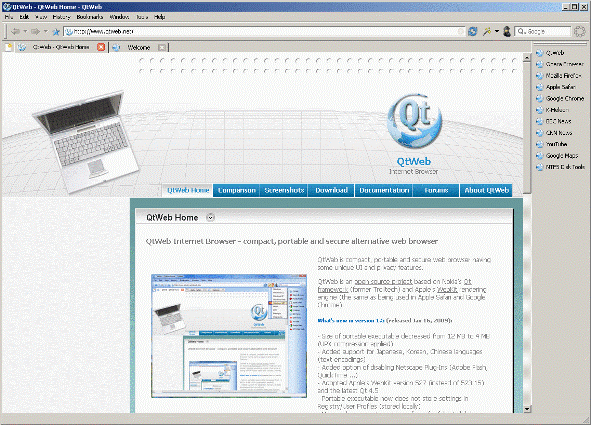
QWebEngineProfile ::defaultProfile() - >settings() - >setAttribute( QWebEngineSettings ::PluginsEnabled, true) QLoggingCategory ::setFilterRules(u "qt.bug=true"_s) setWindowIcon( QIcon(u ":AppLogoColor.png"_s)) QCoreApplication ::setOrganizationName( "QtExamples") Īpp. If no arguments are passed on the command line, we open the Qt Homepage: In main.cpp, we create the first BrowserWindow instance and add it to the Browser object. This class also owns the DownloadManagerWidget and could be used for further functionality, such as bookmarks and history managers.

This example supports multiple main windows that are owned by a Browser object. DownloadManagerWidget is a QWidget implementing the downloads list.WebPopupWindow is a QWidget for showing popup windows.WebPage is a QWebEnginePage that represents website content.Īdditionally, we will implement some auxiliary classes:.WebView is a QWebEngineView, provides a view for WebPage, and is added as a tab in TabWidget.TabWidget is a QTabWidget and contains one or multiple browser tabs.BrowserWindow is a QMainWindow showing the menu, a navigation bar, TabWidget, and a status bar.Browser is a class managing the application windows.We start with sketching a diagram of the main classes that we are going to implement: For more information, visit Building and Running an Example. To run the example from Qt Creator, open the Welcome mode and select the example from Examples. HTTP and proxy authentication can be used for accessing web pages. The web content can be opened in new tabs or separate windows. Status bar for displaying hovered links.Multi-tab area for displaying web content within tabs.

Navigation bar for entering a URL and for moving backward and forward in the web page browsing history.Menu bar for opening stored pages and managing windows and tabs.
Qtweb browser widget how to#
Simple Browser demonstrates how to use the Qt WebEngine C++ classes to develop a small Web browser application that contains the following elements:


 0 kommentar(er)
0 kommentar(er)
